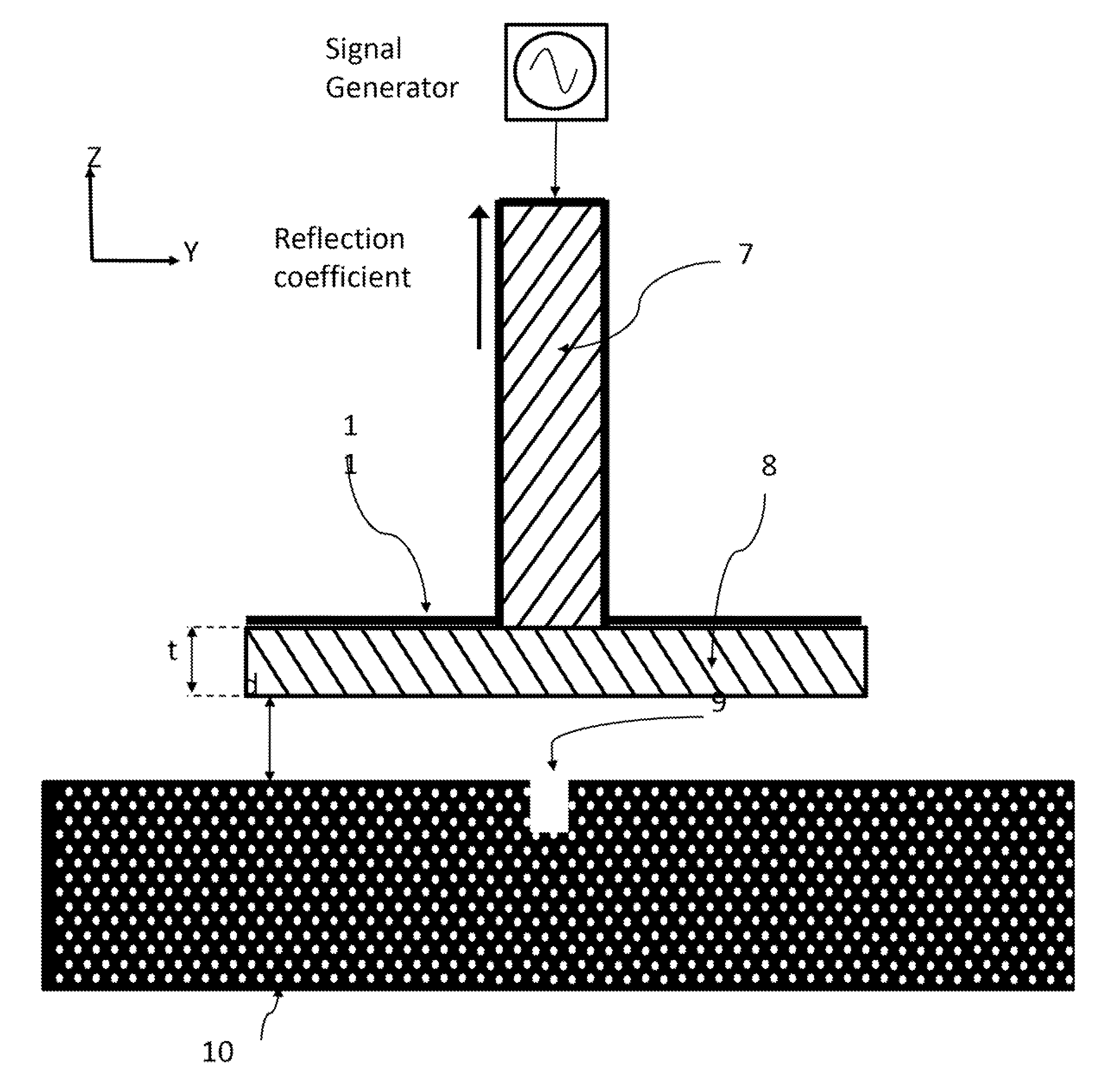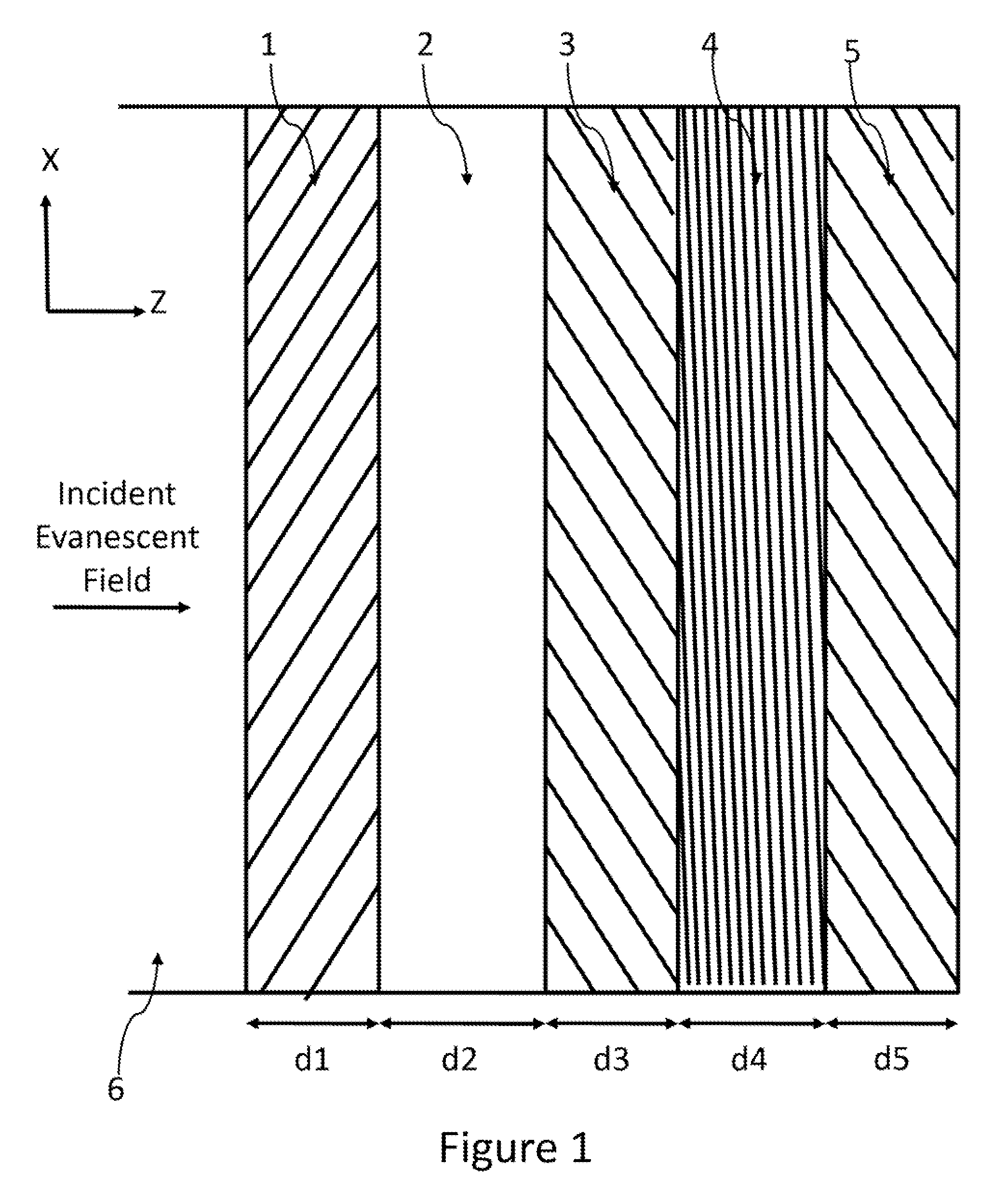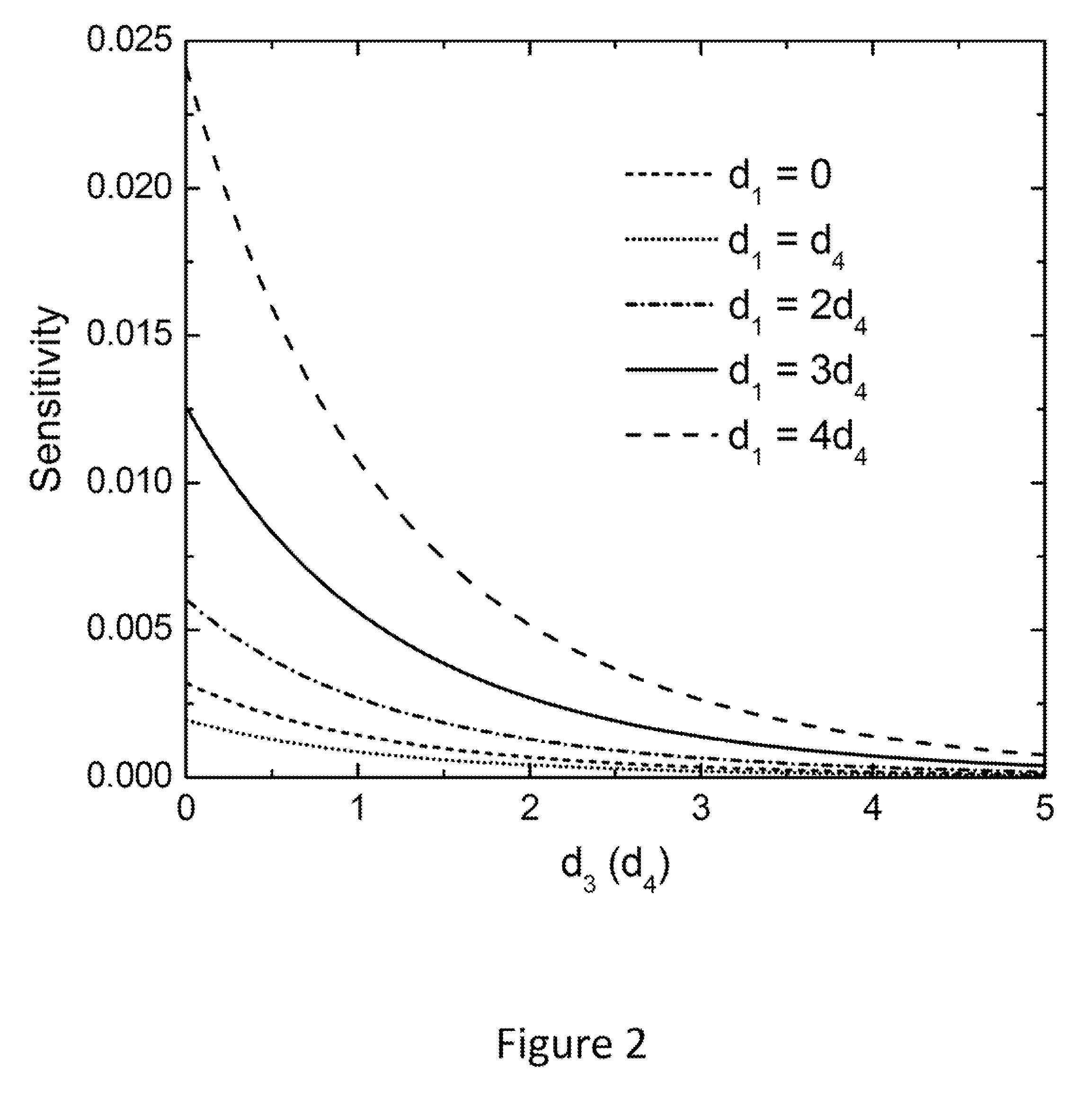Sensitivity Enhancement of Near-Field Probes using Metamaterials
a near-field probe and metamaterial technology, applied in scanning probe microscopy, photometry, nanotechnology, etc., can solve the problems of severe limitation of their use, increase in probe sensitivity, etc., and achieve the effect of improving the sensitivity of near-field probes and increasing both sensitivity and resolution
- Summary
- Abstract
- Description
- Claims
- Application Information
AI Technical Summary
Benefits of technology
Problems solved by technology
Method used
Image
Examples
Embodiment Construction
[0031]The interaction between a near-field probe and target is modeled by using multi-layer media. The energy coming from the near-field probe is represented as evanescent plane waves since all time-harmonic fields can be expressed as a superposition of plane waves. Therefore the overall response of a near-field probe is a combination of die responses of plane waves present in its spectrum.
[0032]FIG. 1 shows the multilayer structure used for analyzing the effect of negative materials on the sensitivity of a single evanescent plane wave. The following configurations are to demonstrate the sensitivity enhancement capabilities of negative materials and the invention is not limited to these configurations. The target 4 is represented by a layer with a permittivity different than the surrounding medium, referred as the target medium. Therefore the target 4 is assumed to be buried within the target medium 3. The structure is composed of 6 regions corresponding to the negative metamaterial...
PUM
 Login to View More
Login to View More Abstract
Description
Claims
Application Information
 Login to View More
Login to View More - R&D
- Intellectual Property
- Life Sciences
- Materials
- Tech Scout
- Unparalleled Data Quality
- Higher Quality Content
- 60% Fewer Hallucinations
Browse by: Latest US Patents, China's latest patents, Technical Efficacy Thesaurus, Application Domain, Technology Topic, Popular Technical Reports.
© 2025 PatSnap. All rights reserved.Legal|Privacy policy|Modern Slavery Act Transparency Statement|Sitemap|About US| Contact US: help@patsnap.com



